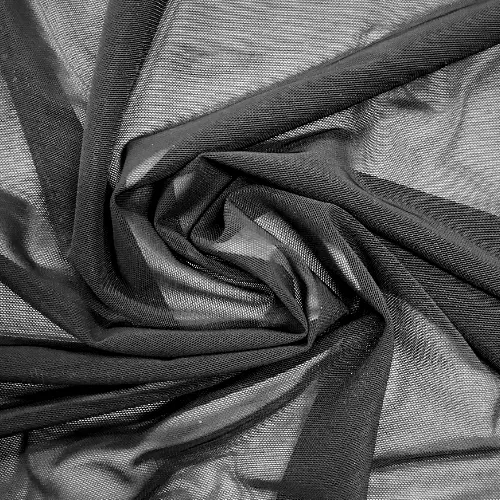There are many different types of compression fabric. These include nylon, spandex and cotton. Nylon and spandex improve the material’s functionality, while cotton provides elasticity.
Compression garments are commonly used for chronic venous disease management, hypertrophic scar, orthopedic supports and sportswear. However, it is essential to know the characteristics of the fabric before using it.
Fabric properties like hysteresis and dynamic elastic properties are significant for actual compression. Other important factors are the garment fit and fabric stretch.
Stretchy
Compression fabric is used in various garments, including shorts, leggings, tops, and socks. The pressure the material applies to muscles improves blood flow and circulation, reducing muscle damage and increasing recovery time after exercise. It also helps to reduce the risk of injury by lowering heart rate and blood pressure. Its tight, form-fitting shape can also make the body more toned. Before choosing a compression fabric, it is best to understand what is compression fabric and its application.
The most common materials for compression fabric include nylon, spandex, and cotton. Nylon is a silky synthetic fiber made from diamine and dicarboxylic acid atoms. It is a strong, lightweight material that is easy to wash and resistant to shrinkage. It is also breathable, which is important for someone who wears compression gear while exercising. The fabric’s breathability allows sweat to escape and prevents the garment from soaking in it.
Nylon is usually blended with other fabrics to make them more stretchy and comfortable. The proportion of the other material varies depending on the type of clothing being made. For example, some joggers are made of 80% nylon and 20% spandex. This blend is a good choice for athleticwear and swimwear. It is also available in several colors: black, neon green, pink, red, blue, and white. The fabric is sold in one-yard pieces. This is the perfect amount for making a compression garment or creating your joggers.
Breathable
You will want it to be breathable when wearing tight-fitting clothing, like tights or leotards. This helps prevent the fabric from becoming soaked in sweat, which can cause it to feel uncomfortable against the skin. Breathable fabrics also allow moisture to evaporate faster, keeping you cool and dry.
Many types of nylon and spandex-based compression fabric are breathable; some even have a small percentage of cotton fibers woven into the material to make it softer against the skin. This adds a layer of comfort to the garment, which can be important when wearing it for long periods, such as during exercise.
Some of the best breathable compression fabrics are used to make athletic apparel, such as t-shirts, socks, and leggings. These tight-fitting fabrics can help boost athletic performance by improving muscle blood flow and reducing muscle soreness after exercise. They can also reduce the risk of injuries by supporting tendons and ligaments.
Many of these tight-fitting clothing items are designed for athletes. Still, they can be worn by anyone who needs to improve their circulation or has a medical condition that affects their circulation. You can find them at specialty sports stores and online. They are often available with Velcro closures, but you can also buy compression shirts and binders with hook-and-eye or zipper closures.
Non-Slip
This fabric is primarily used for sportswear and has several benefits that are especially useful for athletes. For example, it can improve muscle health by reducing inflammation and allowing oxygen to reach the muscles better. It also helps reduce the risk of injury and speed up recovery. In addition to being a great choice for sportswear, this fabric is also used to make medical garments, such as compression stockings for varicose veins and blood clots.
Compression fabrics are usually knitted with a combination of nylon and spandex. The nylon improves the durability and functionality of the material, while the spandex gives it elasticity. This combination is also ideal for making tight-fitting but stretchy clothing. It can be purchased from online retailers in different colors and sizes. Most compression fabric is sold in one-yard pieces, and it comes in black, neon pink, red, blue, white, and yellow.
The stiffness of the fabric is also important, as it influences the pressure performance of a garment. This property is measured in terms of static and dynamic stiffness. Static stiffness refers to the change in pressure that occurs when a garment is stretched or compressed, while dynamic stiffness refers to how the fabric responds to changes in body size and movement. It is possible to use different types of elastic yarns for the material to achieve the desired stiffness.
Comfortable
People who wear garments made of compression fabric often keep them on for long stretches, which means the fabric needs to be comfortable. Most compression garments are made of nylon and spandex, but some include a small percentage of cotton to give the garment a soft feel against the skin. Cotton also helps increase the fabric’s breathability, which is important if you wear the attire while exercising or sweating.
Compression fabric is used in various garments, including shorts, leggings, tops, socks, gloves, and sleeves. It’s typically worn during exercise to improve blood flow, which can reduce muscle soreness by delivering oxygen and nutrients to the muscles more quickly and decreasing lactic acid buildup. It’s also used for medical purposes, including varicose veins and post-surgery wound healing.
The compression fabric used in sportswear and body shaping garments usually has a low or medium elastic fiber to meet the fabric stretch requirements for those applications, while medical garments require high elasticity. The fabric’s hysteresis and dynamic elastic properties also play a role in the garment’s pressure performance, as well as its air permeability, heat transmission, and tactile characteristics. Ideally, the fabric should have a low hysteresis for consistent pressure and fast recovery when the tension is removed.








Hello!! My name is Annabella
I love to eat, travel, and eat some more! I am married to the man of my dreams and have a beautiful little girl whose smiles can brighten anyone’s day!